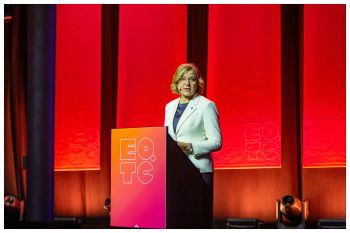

Among the Ariane 6 rocket’s payloads was a diamond-based quantum magnetometer. This advanced sensor leverages negatively charged nitrogen vacancy (NV) centres in diamond to detect magnetic fields with exceptional sensitivity and range, even at room temperature. The diamond quantum magnetometers for application including space are being developed under the EU-funded AMADEUS project, coordinated by Thales. Importantly, the NV-centres in the AMADEUS devices are read electrically, which keeps the magnetometers compact and thus suitable for space applications.
One of the teams taking part in AMADEUS is imo-imomec, a joint research institute of imec and Hasselt University. Their interdisciplinary student team, OSCAR, led by Dr. Jaroslav Hruby, has a history of space innovation. In 2021, their quantum diamond magnetometer, OSCAR-QUBE, operated successfully on the International Space Station for ten months. This success led to their participation in ESA’s Young Professionals Satellite (YPSAT) mission.
On the Ariane 6 flight, the successor device OSCAR-QUBE+ demonstrated its capabilities during a short test mission. It sensitively measured the magnetic field along the rocket’s trajectory over two orbits around Earth. Initial data from ESA indicates that the magnetometer detected the rotation of the launcher in relation to Earth’s magnetic field, contributing to the validation of navigation and attitude determination concepts.
The OSCAR project not only advances technical and scientific goals but also provides invaluable hands-on experience for young scientists and engineers in space engineering and quantum research. This initiative aligns with the societal objectives of the AMADEUS project and the EU's broader research policy to cultivate a highly skilled workforce in quantum technologies.



